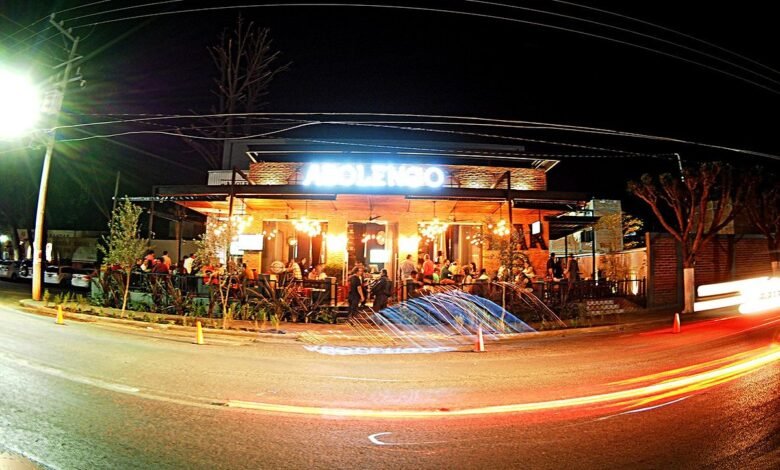Understanding Abolengo: The Legacy of Noble Ancestry

Introduction
The concept of noble lineage has shaped societies across the globe for millennia, but few terms capture this idea as elegantly as “abolengo.” This Spanish word encompasses far more than simple family history it represents the weight of ancestral legacy, the preservation of noble blood, and the cultural significance of hereditary distinction.
Abolengo speaks to something deeply human: our desire to understand where we come from and how our ancestors’ achievements reflect upon us. While modern society has largely moved away from rigid class structures, the concept continues to influence how we think about family heritage, social status, and cultural identity.
Understanding abolengo requires exploring its rich historical roots, examining its impact on art and literature, and considering how this ancient concept applies to our contemporary world. This exploration reveals not just a linguistic curiosity, but a window into how societies have long grappled with questions of merit, inheritance, and social hierarchy.
Origin and Etymology
The word “abolengo” derives from the Spanish term that combines “abuelo” (grandfather) with the suffix “-engo,” creating a word that literally refers to ancestral lineage stretching back through generations. Its roots trace back to Latin “avus,” meaning ancestor or grandfather, demonstrating the term’s ancient connections to family heritage.
The linguistic evolution of abolengo reflects broader cultural attitudes toward ancestry. Unlike simple genealogy, which merely traces family trees, abolengo carries connotations of nobility, honor, and social distinction passed down through bloodlines. The term implies not just any ancestry, but distinguished ancestry worthy of recognition and respect.
Spanish and Latin American cultures developed this concept as a way to codify the importance of noble heritage. The word appears in legal documents, literary works, and social discourse as a marker of legitimacy and social standing. This linguistic precision reflects the historical importance placed on maintaining clear records of noble descent.
Historical Significance
Throughout history, abolengo served as a cornerstone of aristocratic society, particularly in Spain and its colonial territories. The concept shaped everything from marriage arrangements to political appointments, creating a system where family background often determined individual opportunities and social standing.
During the Spanish colonial period, abolengo became particularly significant in the Americas. Colonial administrators used lineage as a way to establish and maintain social hierarchies, with those of noble Spanish descent occupying the highest social positions. This system created lasting impacts on social structures throughout Latin America.
The concept also played a crucial role in the Spanish nobility’s efforts to maintain their position during periods of political upheaval. When economic conditions changed or political power shifted, families could still claim social distinction through their abolengo, even when their material circumstances declined.
Medieval Spanish society codified these concepts through detailed genealogical records and heraldic traditions. Families invested considerable resources in maintaining documentation of their noble lineage, understanding that their abolengo represented both social capital and legal standing in matters of inheritance and privilege.
Cultural Impact
Abolengo profoundly influenced Spanish and Latin American art, literature, and cultural expression. Writers incorporated themes of noble ancestry into their works, exploring the tension between inherited status and individual merit. This literary tradition helped establish abolengo as more than a social concept it became a cultural touchstone.
The visual arts similarly reflected the importance of noble lineage. Portrait paintings often included heraldic symbols and genealogical references, while architectural elements in noble residences displayed family crests and ancestral imagery. These artistic expressions reinforced the cultural significance of maintaining and celebrating aristocratic heritage.
Religious institutions also played a role in preserving and promoting the concept of abolengo. Churches maintained detailed records of noble families, and religious ceremonies often acknowledged aristocratic lineages. This spiritual dimension added another layer of legitimacy to claims of noble ancestry.
Folk traditions and popular culture absorbed elements of abolengo as well. Stories, songs, and celebrations often referenced noble ancestors or aristocratic heritage, even among families of more modest means. This cultural diffusion demonstrates how deeply the concept penetrated societal consciousness.
Modern Interpretations
Contemporary perspectives on abolengo reflect broader changes in social attitudes toward hereditary privilege and meritocracy. While few modern societies maintain formal aristocratic systems, the concept continues to resonate in various forms throughout Spanish-speaking cultures.
Modern genealogical research has given new life to interest in abolengo. Families use DNA testing and historical records to trace their lineages, seeking connections to notable ancestors or noble bloodlines. This contemporary pursuit of ancestral knowledge reflects an enduring fascination with heritage and family history.
Academic scholarship has reexamined abolengo through critical lenses, analyzing how concepts of noble ancestry reinforced social inequalities and exclusionary practices. These scholarly investigations help illuminate the historical construction of social hierarchies and their lasting impacts.
Some contemporary interpretations seek to democratize the concept of abolengo, arguing that all families possess valuable ancestral legacies worthy of recognition and preservation. This inclusive approach maintains the term’s emphasis on heritage while rejecting its traditionally elitist implications.
Case Studies
The House of Alba represents one of Spain’s most prominent examples of maintained abolengo. This noble family has preserved detailed genealogical records spanning centuries, maintaining their position in Spanish society through careful documentation of their aristocratic heritage. Their extensive collection of titles and properties demonstrates how abolengo translated into lasting social and economic advantages.
In colonial Mexico, the Cortés family exemplified how abolengo functioned in New World contexts. Descendants of conquistador Hernán Cortés used their ancestral connection to maintain social prominence across generations, even as political and economic conditions in Mexico changed dramatically.
The literary figure Miguel de Cervantes, despite his modest economic circumstances, claimed noble abolengo through his family lineage. His case illustrates how aristocratic ancestry could provide social distinction even when not accompanied by material wealth, highlighting the cultural value placed on noble bloodlines independent of economic status.
Several prominent Latin American families have maintained their claims to abolengo across centuries of political upheaval and social change. These families demonstrate how the concept adapted to different national contexts while retaining its core emphasis on ancestral nobility and cultural distinction.
Frequently Asked Questions
What’s the difference between abolengo and regular genealogy?
While genealogy simply traces family history, abolengo specifically refers to noble or distinguished ancestry. It carries implications of social status and cultural significance that ordinary family trees don’t necessarily possess.
Is abolengo still relevant in modern society?
Although formal aristocratic systems have largely disappeared, the concept continues to influence cultural identity and social consciousness in many Spanish-speaking communities. It appears in literature, family traditions, and genealogical research.
How was abolengo documented historically?
Historical documentation included church records, legal documents, heraldic registries, and family chronicles. These records were carefully maintained by both religious and secular authorities to verify claims of noble ancestry.
Can abolengo be acquired or is it purely hereditary?
Traditional understanding of abolengo viewed it as purely hereditary, passed down through bloodlines. However, some historical periods allowed for the purchase or granting of noble titles that could establish abolengo for future generations.
How did abolengo affect marriage and social relationships?
Abolengo significantly influenced marriage arrangements, as families sought to maintain or improve their noble lineage through strategic unions. It also affected business partnerships, political alliances, and social circles.
The Enduring Legacy of Noble Ancestry
Abolengo represents more than historical curiosity it offers insight into fundamental human concerns about identity, belonging, and cultural continuity. While modern democratic societies have largely rejected hereditary privilege, the underlying human desire to connect with ancestral legacy remains powerful.
Understanding abolengo helps illuminate how past societies constructed meaning around family heritage and social distinction. These historical patterns continue to influence contemporary attitudes toward ancestry, cultural identity, and social status, even in supposedly egalitarian societies.
For those researching family history or exploring cultural heritage, the concept of abolengo provides a framework for understanding how previous generations valued and preserved ancestral connections. Whether pursuing noble lineages or simply seeking to understand family origins, recognizing the historical significance of distinguished ancestry enriches our appreciation of the past’s continued influence on the present.



